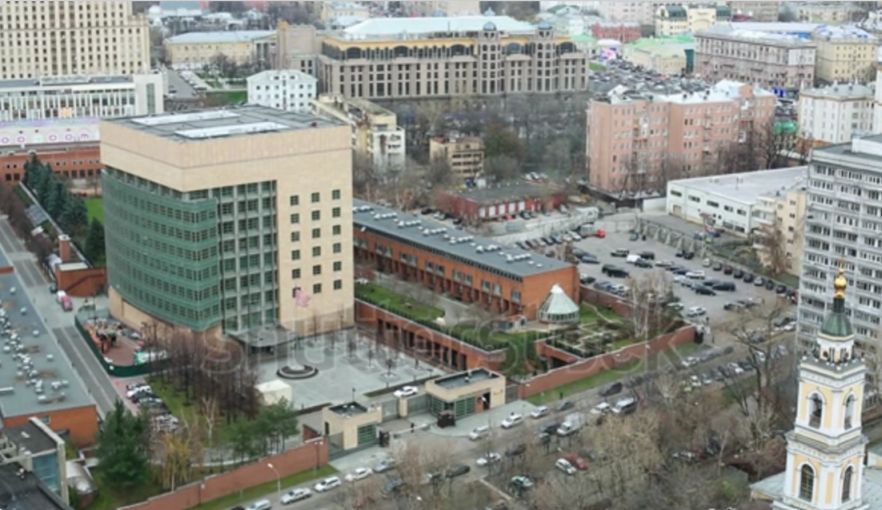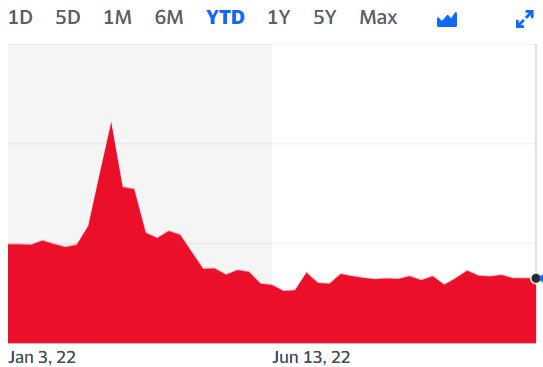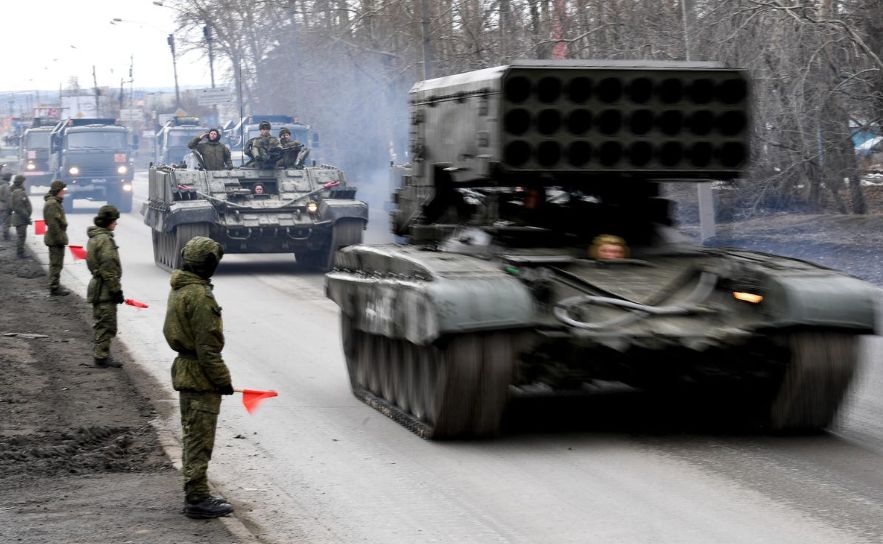By Eric Vandenbroeck
and co-workers
For The Russian Economy To Grow
After Russia invaded Ukraine
in February, the Russian economy seemed destined for a nosedive. International
sanctions threatened to strangle the economy, leading to a plunge in the value
of the ruble and Russian financial markets. Every day Russians appeared poised
for privation.
More than eight
months into the war, this scenario has yet to come to pass. Indeed, some data
suggest that the opposite is accurate, and the Russian economy is doing fine.
The ruble has strengthened against the dollar, and although the Russian GDP has
shrunk, the contraction may be limited to less than three percent in 2022.
However, look behind
the moderate GDP contraction and inflation figures, and it becomes evident that
the damage is severe: the Russian economy is destined for an extended period of
stagnation. The state was already interfering in the private sector before the
war. That tendency has become more pronounced and threatens to stifle
innovation and market efficiency further. The only way to preserve the
viability of the Russian economy is either through significant reforms—which
are not in the offing—or an institutional disruption similar to the one that
occurred with the fall of the Soviet Union.

The misapprehension
of what sanctions against Russia would accomplish can be partly explained by
unrealistic expectations of what economic measures can do. Simply put, they are
not the equivalent of a missile strike. In the long run, sanctions can weaken
the economy and lower GDP. But in the short run, the most one can reasonably
hope for is a massive fall in Russia's imports. It is only natural that the
ruble strengthens rather than weakens as the demand for dollars and euros
drops. And as the money that would have been spent on imports is redirected
toward domestic production, GDP should rise rather than fall. The effects of
sanctions on consumption and quality of life take longer to work through the
economy.

At the beginning of
the war, in February and early March, Russians rushed to buy dollars and euros
to protect themselves against a potential plunge in the ruble. Over the next
eight months, with Russian losses in Ukraine mounting, they bought even more.
Usually, this would have caused a significant devaluation of the ruble because
when people buy foreign currency, the ruble plunges. Because of sanctions,
however, companies that imported goods before the war stopped purchasing
currency to finance these imports. As a result, imports fell by 40
percent in the spring. One consequence was that the ruble strengthened against
the dollar. In short, it was not that sanctions did not work.
On the contrary,
their short-term effect on imports was unexpectedly strong. Such a fall in
imports was not expected. If Russia's central bank had anticipated such a
massive fall, it would not have introduced severe restrictions on dollar
deposits in March to prevent a collapse in the ruble's value.
Economic sanctions
did, of course, have other immediate effects. Curbing Russia's access to
microelectronics, chips, and semiconductors made the production of cars and
aircraft almost impossible. From March to August, Russian car manufacturing
fell by an astonishing 90 percent, and the drop in aircraft production was
similar. The same holds for the production of weapons, which is understandably
a top priority for the government. Expectations that new trade routes through
China, Turkey, and other countries not part of the sanctions regime would
compensate for the loss of Western imports have been proved wrong. The
abnormally strong ruble signals that back-door import channels are not working.
If imports flowed into Russia through hidden channels, importers would have bought
dollars, sending the ruble down. Without these critical imports, the long-term
health of Russia's high-tech industry is dire.
Even more
consequential than Western technology sanctions is that Russia is unmistakably
entering a period in which political cronies are solidifying their hold over
the private sector. This has been a long time in the making. After the 2008
global financial crisis hit Russia harder than any other G20 country, Russian
President Vladimir Putin essentially nationalized large enterprises. In some
cases, he placed them under direct government control; in other cases, he put
them under the purview of state banks. To stay in the government's good graces,
these companies have been expected to maintain a surplus of workers on their
payrolls. Even enterprises that remained private have, in essence, been
prohibited from firing employees. This did provide the Russian people with
economic security—at least for the time being—and that stability is a critical
part of Putin's compact with his constituents. But an economy where enterprises
cannot modernize, restructure, and fire employees to boost profits will
stagnate. Not surprisingly, Russia's GDP growth from 2009 to 2021 averaged 0.8
percent per year, lower than the period in the 1970s and 1980s that preceded
the collapse of the Soviet Union.

Even before the war,
Russian businesses faced regulations that deprived them of investment. Advanced
industries such as energy, transportation, and communication—those that would
have benefited the most from foreign technology and investment—faced the most
significant restrictions. Companies operating in this space were forced to
maintain close ties with government officials and bureaucrats to survive. In
exchange, these government protectors ensured that these businesses faced no
competition. They outlawed foreign investment, passed laws that put onerous
burdens on foreigners doing business in Russia, and opened investigations
against companies operating without government protection. The result was that
government officials, military generals, and high-ranking bureaucrats—many of
them Putin's friends—became multimillionaires. In contrast, ordinary Russians'
living standards have not improved in the past decade.
Since the beginning
of the war, the government has tightened its grip on the private sector even
further. Starting in March, the Kremlin rolled out laws and regulations that
allowed the government to shut down businesses, dictate production decisions,
and set prices for manufactured goods. The mass mobilization of military
recruits in September provides Putin with another cudgel to wield over Russian
businesses to preserve their workforces. Company leaders must bargain with
government officials to ensure their employees are exempt from conscription.
To be sure, the
Russian economy has long operated under a government stranglehold. But Putin's
most recent moves are taking this control to a new level. As the economists
Andrei Shleifer and Robert Vishny have argued,
decentralized corruption is the one thing worse than corruption. It's bad
enough when a corrupt central government demands bribes; it is even worse when
several different government offices compete for handouts. Indeed, the high
growth rates of Putin's first office decade were partly due to how he
centralized power in the Kremlin, snuffing out competing predators such as
oligarchs operating outside the government's fold. However, the emphasis on
creating private armies and regional volunteer battalions for his war against
Ukraine is building new power centers. That means that decentralized corruption
will almost certainly resurface in Russia.
That could create a
dynamic reminiscent of the 1990s when Russian business owners relied on private
security, mafia ties, and corrupt officials to maintain control of newly
privatized enterprises. Criminal gangs employing veterans of the Russian war in
Afghanistan offered "protection" to the highest bidder or plundered
profitable businesses. The mercenary groups that Putin created to fight in
Ukraine will play the same role.

A Long Road Ahead
Russia could still
eke out a victory in Ukraine. It's unclear what winning would look like;
perhaps permanent occupation of a few ruined Ukrainian cities would be packaged
as a triumph. Alternatively, Russia could lose the war, an outcome that would
make it more likely that Putin would lose power. A new reformist government
could take over and withdraw troops, consider reparations, and negotiate a
lifting of trade sanctions.
No matter the
outcome, however, Russia will emerge from the war, with its government
exercising authority over the private sector to an extent that is unprecedented
anywhere in the world aside from Cuba and North Korea. The Russian government
will be omnipresent yet simultaneously not strong enough to protect businesses
from mafia groups consisting of demobilized soldiers armed with weapons they
acquired during the war. Particularly at first, they will target the most
profitable enterprises, both at the national and local levels.
For the Russian
economy to grow, it will need major institutional reforms and the kind of clean
slate Russia left in 1991. The collapse of the Soviet state made institutions
of that era irrelevant. A long and painful process of building new
institutions, increasing state capacity, and reducing corruption followed—until
Putin came to power and eventually dismantled market institutions and built his
system of patronage. The lesson is grim: even if Putin loses control and a
successor ushers in significant reforms, it will take at least a decade for
Russia to return to the levels of private-sector production and quality of life
the country experienced just a year ago. Such are the consequences of a
disastrous, misguided war.
For updates click hompage here